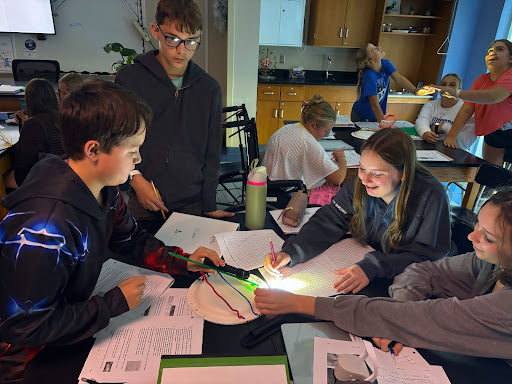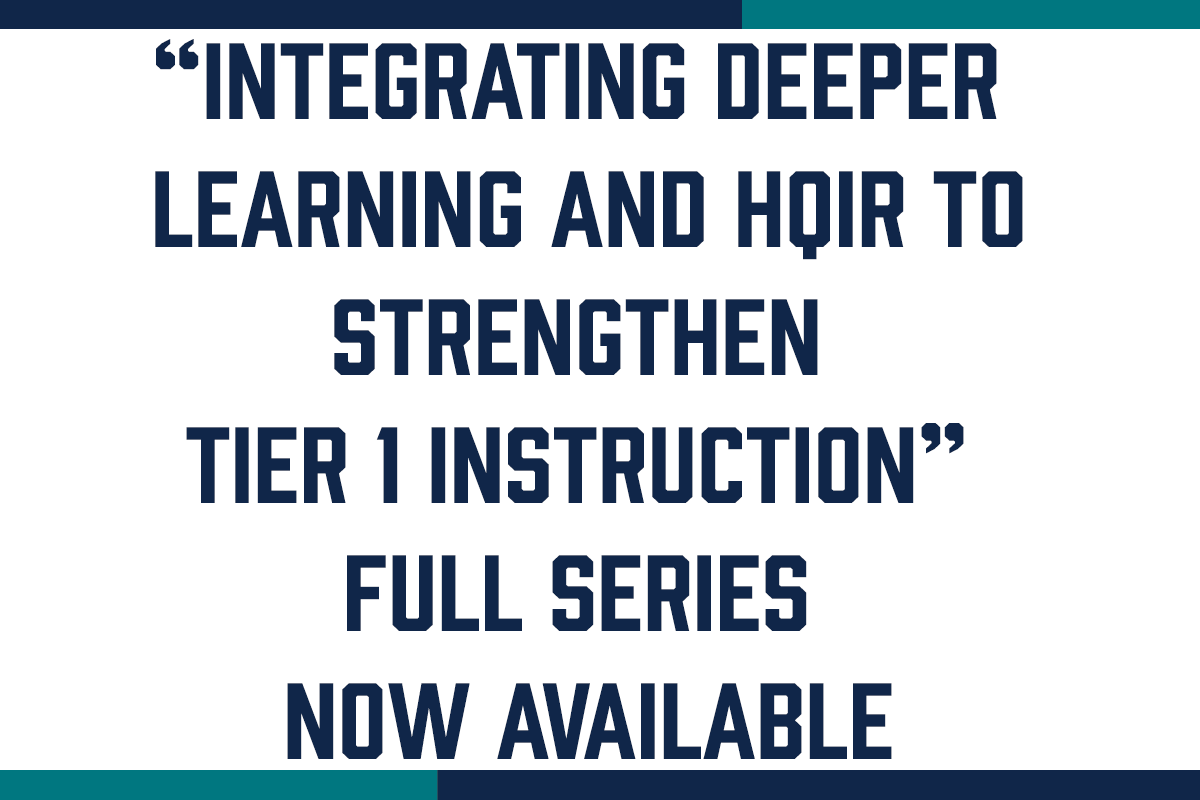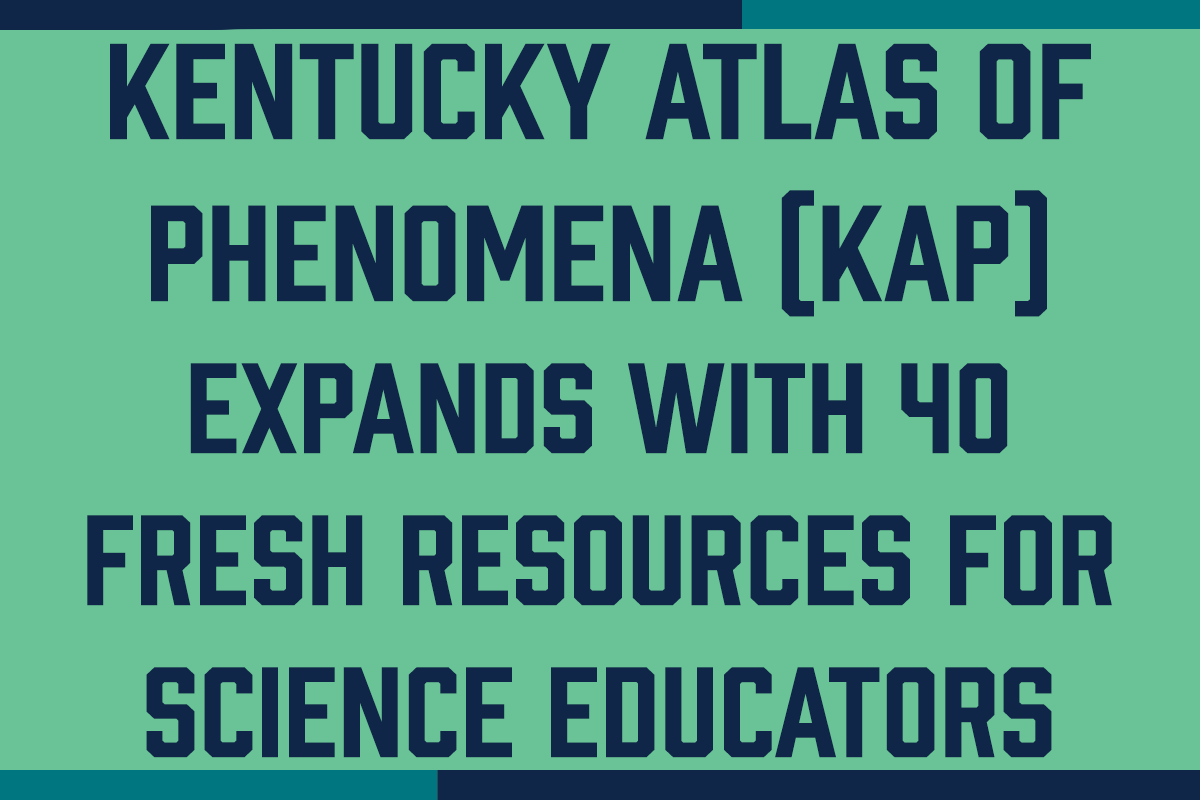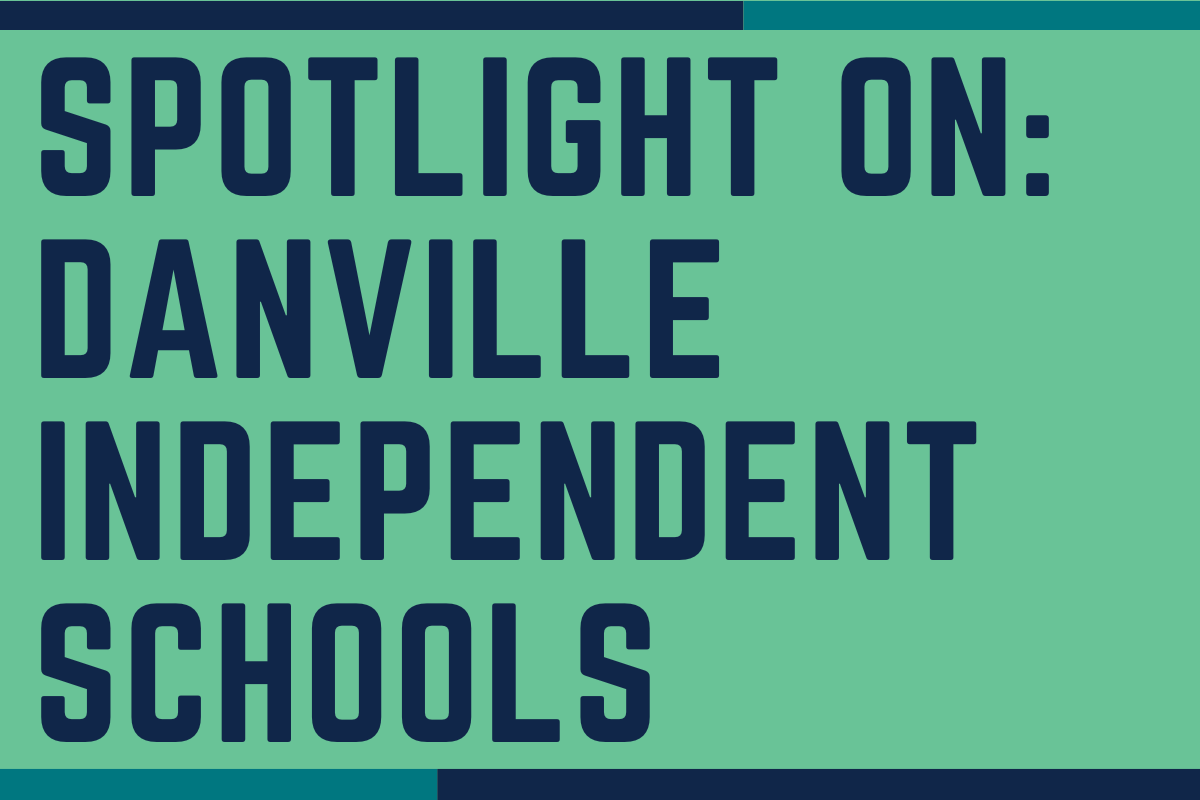
Spotlight on Science: High-Quality Instructional Resources Transform Elementary Classrooms in the Danville Independent School District
Teachers in the Danville Independent School District are bringing science to life with new high-quality instructional resources (HQIR). Elementary educators use Smithsonian and Carolina Biological resources to foster inquiry-based learning. Chief Academic Officer, Suzanne Farmer, says, “The grant’s focus is not only to enrich the learning experience for students, but also to empower educators to lead and learn from each other.”
At Mary G. Hogsett Primary School, teachers integrate science with literacy, strengthening students’ comprehension and communication skills. Principal Pamela Hambrick says, “Teachers are not only offering hands-on experiences [in science], but also helping students connect new concepts with the language and vocabulary they need to engage with the topics through reading and writing later in their learning. We have seen students be able to comprehend texts at higher levels and communicate their learning through speaking and writing more easily and clearly,” she said.
Kindergarteners engineer sunshades and observe live caterpillars, while first graders explore sound, light, and plant growth through interactive lessons. Third through fifth graders engage in hands-on experiments, from designing hurricane-resistant roofs to investigating chemical reactions.
1st-grade teacher Dana Oliver described the HQIR as “game-changing in enriching learning and aligning with grade-level science standards.” She says, “students are encouraged to share their ideas, grow, ask for help when needed and [learn] how to keep going even when the lesson is difficult.”
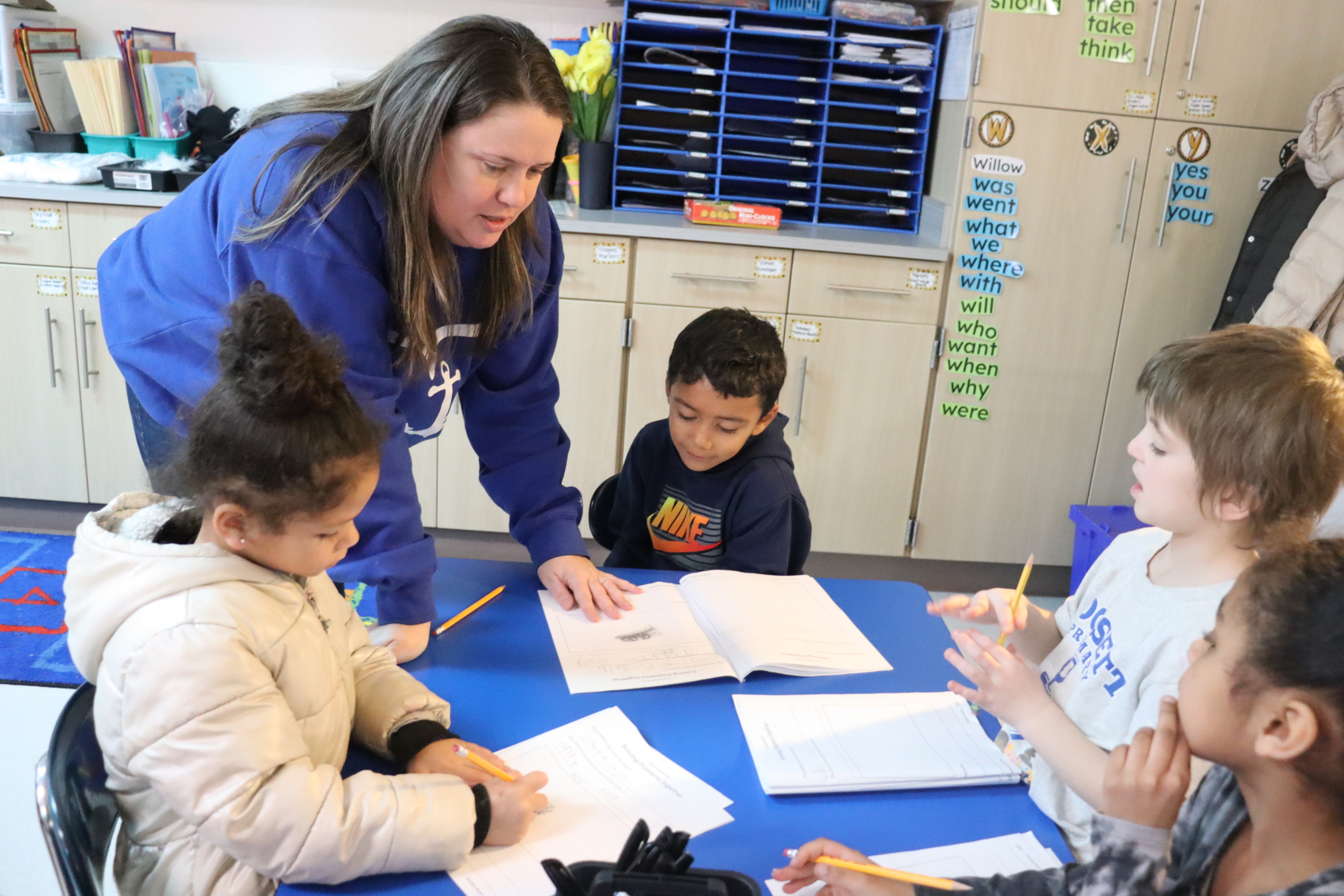
Oliver helps her students as they fill out their science journals.
Photo courtesy of Danville Independent Schools.
Kindergarten teacher Somer New says, “The student engagement in these lessons really keeps them focused and eager to learn. The hands-on elements also give students an opportunity to discover a phenomenon for the first time and create models of their learning. Some of the lessons we have completed even include live materials, such as radish plants and painted-lady caterpillars.”
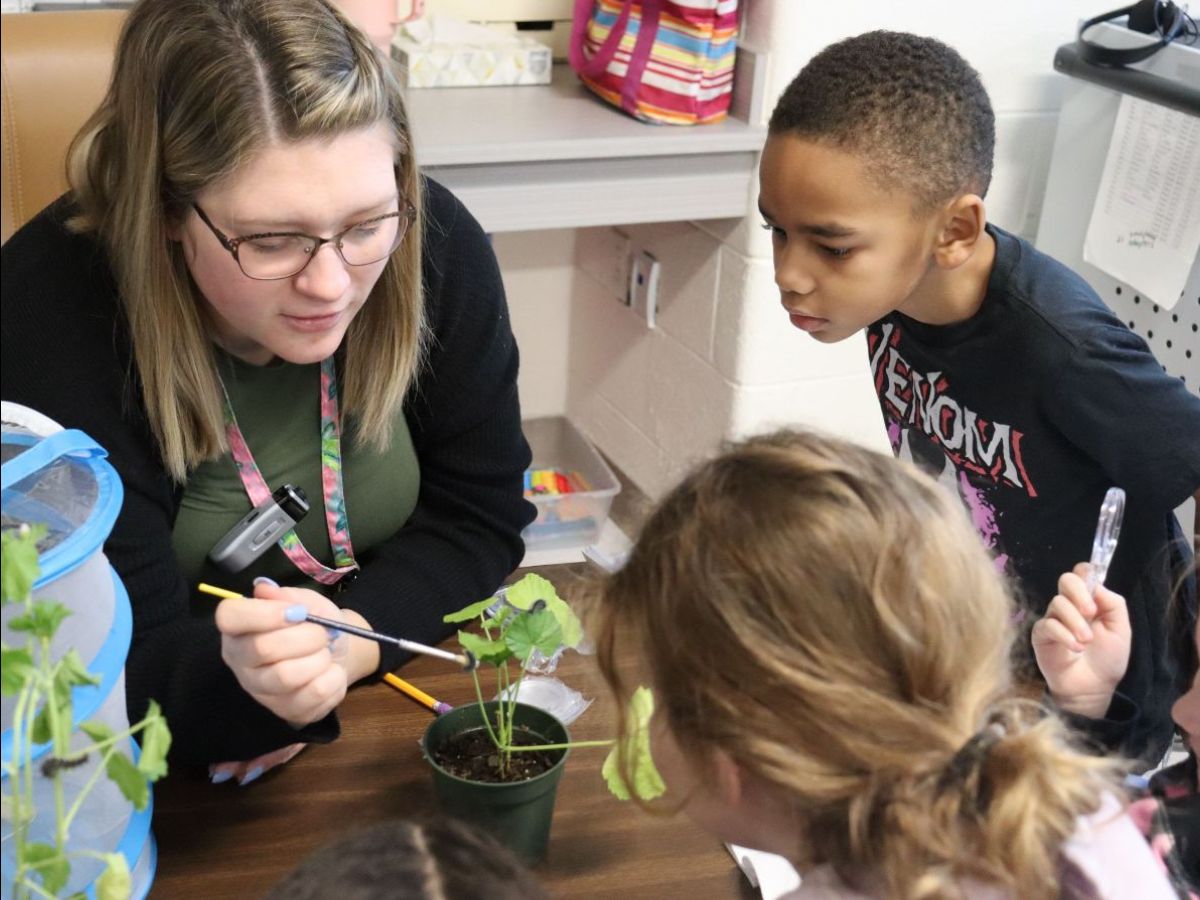
New shows students caterpillars feeding on plants.
Photo courtesy of Danville Independent Schools.
Kindergarten teacher Kendra Hines says the resource hits on many attributes of the Portrait of a Danville Learner. “They are able to use their resources to become an empowered learner, a creative problem-solver by innovation and seeing different perspectives, a productive collaborator and effective communicator by working and discussing with others,” she said. “They are embodying all of these attributes without realizing it.”
Susan Wheeler, a 5th-grade teacher at Edna L. Toliver Intermediate School, says this grant and resource has transformed the way she teaches science. “In the past, lessons were more lecture-based and focused on memorization,” she said. “Now, students are active participants, engaging in experiments and making discoveries themselves. Their understanding of concepts like matter, chemical reactions, and plant growth has deepened significantly. I’ve observed increased curiosity, better problem-solving skills and more collaboration among students.”
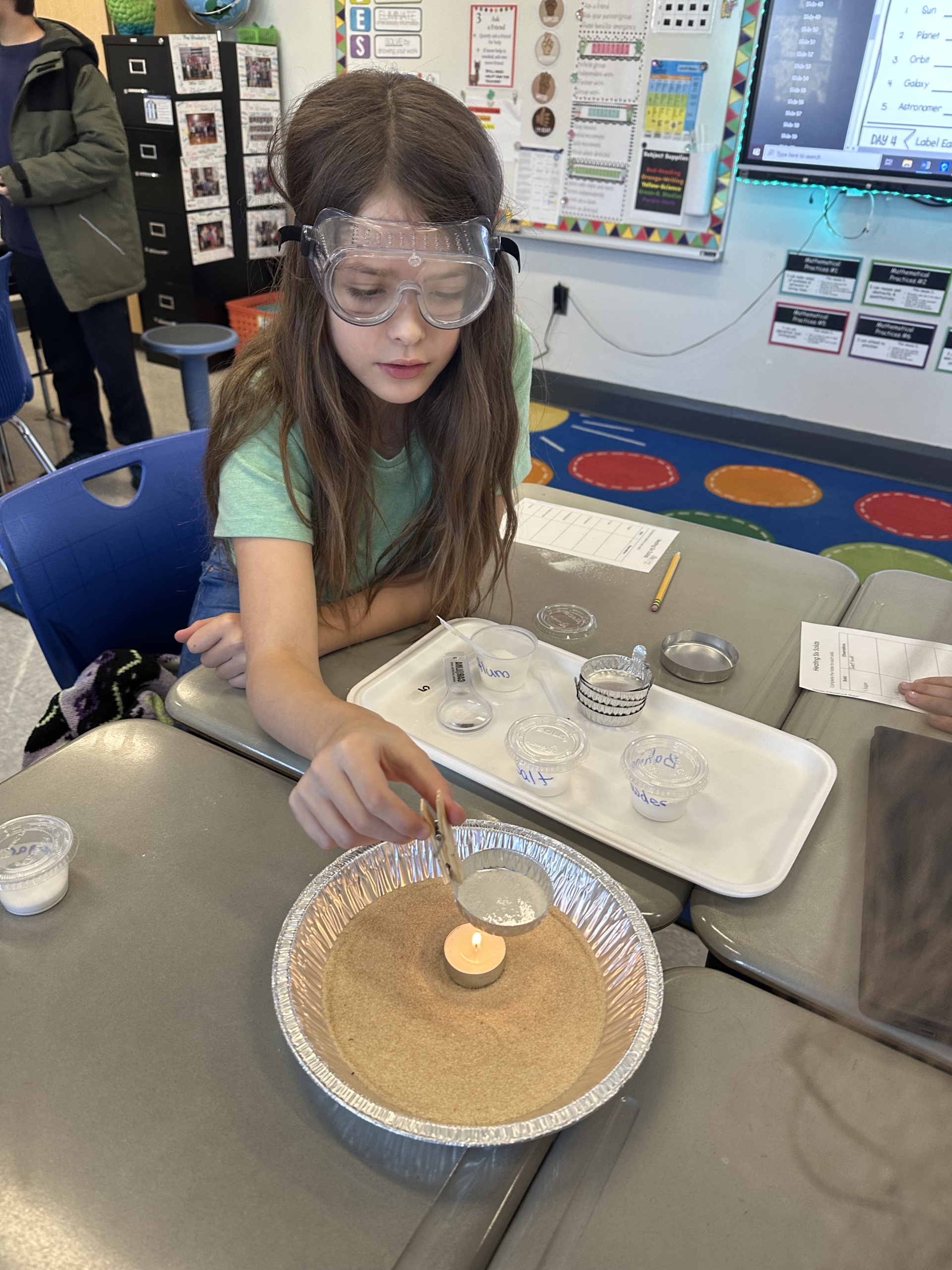
One of Wheeler’s students heats up a substance.
Photo courtesy of Danville Independent Schools.
The implementation of HQIRs across elementary schools in Danville Independent Schools is redefining the science experience for both students and teachers. With hands-on materials, real-world phenomena, and a strong emphasis on inquiry and collaboration, these resources are cultivating deeper understanding, curiosity, and critical thinking for students. For educators, the shift has been just as meaningful. They are moving from traditional instruction to becoming facilitators of discovery, fostering learning environments where students take the lead in exploring, questioning, and growing together.

